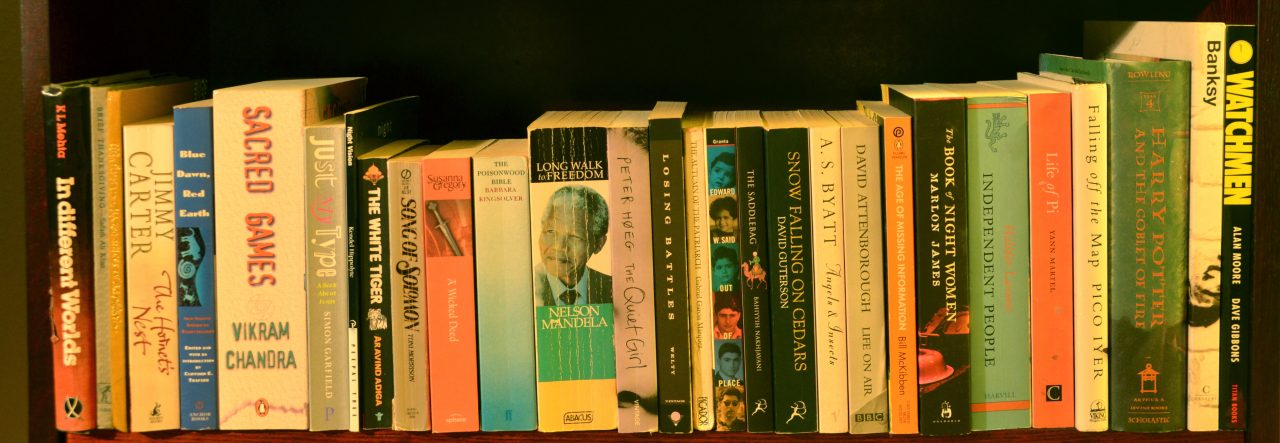Published by Sort of Books, 2022, 368 pages.
“All stories are recycled and all stories are unfair. Many get luck, and many get misery. Many are born to homes with books, many grow up in the swamps of war. In the end, all becomes dust. All stories conclude with a fade to black.”
Maali Almeida, a gay Sri Lankan photographer, wakes up to find himself dead, his soul in a place that seems like a government office. It takes him a while to realize he is dead, and he has no idea how he died.
Souls arrive at a place called the In Between. Here they can wander as ghosts in the world for seven moons (seven days), after which they either move on to the Light or are forever stranded in the In Between.
Maali worked as a photographer documenting the Sri Lankan civil war. The war is over but not the killings, as the government gets rid of those who threaten it. Under a bed in his home, Maali has hidden a box of photographs documenting the war, the killing of innocents and the complicity of those now in power: photographs that he believes, if published, will rock the country. He has seven moons to somehow communicate the location of the photographs to the two people he cares about most and trusts—his great love, DD, and his best friend Jaki, DD’s cousin—hoping they will know what to do with the photos.
There is one problem: Maali cannot communicate with the living. He is befriended by Sena, a ghost who has offered to help. But Sena works for Mahakali, an entity that swallows up souls. It is a risk—if Maali accepts Sena’s help and cannot leave the In Between by the time his seven moons are up, his soul will be swallowed up by Mahakali. Will he manage to get to DD and Jaki before someone else finds the photos? Will Maali find out how he died and who was responsible?
As Maali looks back on his life and moves around the city, eavesdropping on conversations (he can go wherever his name is spoken), the pieces of his life start to coalesce.
The book is narrated in second person, an indication of Maali’s feeling of dislocation. Maali is no saint: although DD is the only man he loves, he sleeps around, gambles regularly and works for those who pay him. But he is not unlikeable, and I found myself rooting for him. More than anything else, he wants to expose the killings and shake the people of his country out of their complacency.
Shehan Karunatilaka portrays the afterlife, where Maali first arrives after his death, as a government office with irate customers.
“The swarm of souls presses closer, berating and badgering the woman in white. You gaze upon the pallid faces, sunken eyes in broken heads, squinted in rage and pain and confusion. The pupils are in shades of bruises and scabs. … This appears to be a gathering point for those with questions about their death. There are multiple counters and irate customers clamour over grills to shout abuse at the few behind the bars. The afterlife is a tax office and everyone wants their rebate.”
Maali is surrounded by victims of murders, often those whose corpses he photographed. Karunatilaka does not sugar-coat the brutality involved. One of the places Maali goes to is a nondescript building known as the Palace, which is where prisoners are tortured and their bodies dumped as rubbish.
Karunatilaka captures the murky politics of war and post-war Sri Lanka, with all the vested interests competing for the country: the Sinhalese government, the Tamils, the foreign powers, NGOs and the UN.
Maali has a sardonic wit, and seeing the afterlife through his eyes has its moments. One of the advantages of being a ghost, he says, is that you can avoid the traffic clogging the city’s streets as you move above the rest.
And there are ghosts everywhere. The dead haunt the living, either seeking vengeance or merely trapped in the In Between. If you thought Colombo was crowded, says Maali, “wait till you see it with ghosts”.
I came away from the book with my head full of damaged souls and men who kill with impunity. This is a powerful and angry book about the devastation caused by war. You do, however, need a strong stomach for it.


I was delighted to find this in my local library last week – not a given in a small town in the Netherlands – so snapped it up to read soon. I’ve wanted to read it ever since I first heard about it and saw that beautiful cover.
The cover is beautiful! It’s good, but quite brutal. I liked the black humour and the portrayal of the politics in Sri Lanka at that time.
Would love to know what you think of it!
Always wanted to learn more about Sri Lanka. Great review Suroor
Pingback: The Best Books of 2023 – Talking About Books